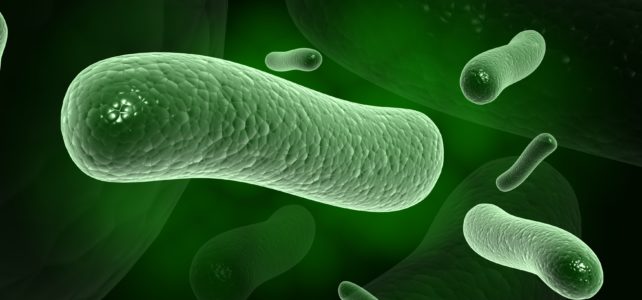
Spread of Carcinogenic Bacteria
Helicobacter pylori infections are a major cause of peptic ulcers and gastric cancers. Although infections are currently treated with antibiotics, the growing instances of antibiotic resistant H. pylori are increasingly becoming a serious concern. Bacterial infections and colonization are promoted by chemotaxis, which refers to the ability to swim towards favorable chemical environments. We are investigating how the chemotaxis signaling network modulates H. pylori’s flagellar functions to promote colonization. Based on our fundamental investigations, we aim to develop innovative strategies for preventing H. pylori infections and related cancers. Read more here.

Cell Mechanics
Bacteria must sense their attachment to a surface before establishing biofilms. As 'Biofouling' due to biofilms annually costs industries billions of dollars, how bacteria sense solid surfaces are of considerable interest. While working with my postdoctoral advisor, Howard Berg, I discovered that protein components of the bacterial flagellum function as mechanosensors. My lab is researching mechanosensing or 'tactile sensing' in bacteria to determine how biofilms are formed. In collaboration with industries, we are testing antibacterial products to mitigate biofouling of surfaces. Read more here.

Antibiotic tolerance
We study the mechanisms whereby bacteria develop tolerance against beta-lactam antibiotics. In particular, we focus on adaptive resistance, which may involve epigenetic phenomena, rather than genetic acquisition. By working at single-cell level, we are attempting to correlate epigenetic changes with alterations in the local mechanical properties of the bacterial cell wall under the action of antibiotics. These projects are anticipated to help develop superior antibiotic delivery and dosing strategies to control pathogen growth.

Nanobiotechnology
Self-assembly drives the formation of all biological systems, including a variety of nanomotors and machines. We are interested in understanding the mechanisms underlying rapid self-assembly of protein machines in cells. Specifically, we are interested in the assembly dynamics that govern how quickly a cell can adapt to an external stressor. We anticipate that the designs based on our insights will help develop synthetic systems with exciting applications in nanobiotechnology and pharmaceuticals.

Protein Engineering
In collaboration with other groups at Texas A&M, we are combining computational methods with molecular genetic tools to rationally design proteins to generate bio-polymeric structures with desirable structures and functionalities. These approaches are expected to aid in the development of superior therapeutics and nutritional supplements.